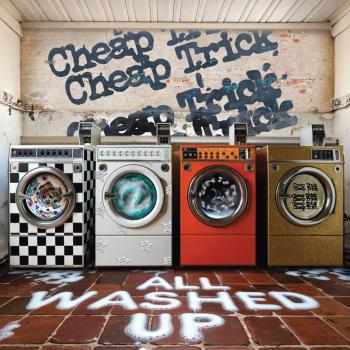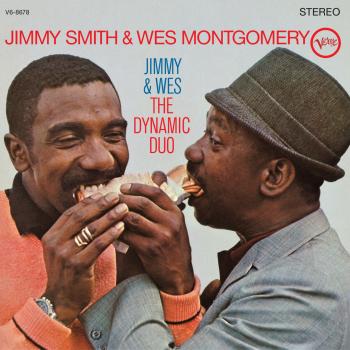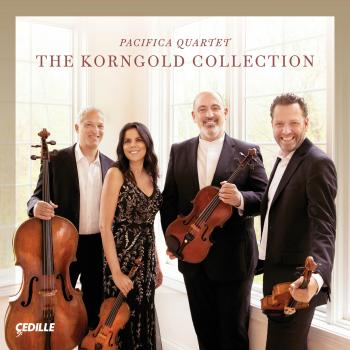
Debussy: Complete Works for Solo Piano, Vol. 5 Jean-Efflam Bavouzet
Album Info
Album Veröffentlichung:
2009
HRA-Veröffentlichung:
21.02.2011
Label: Chandos
Genre: Classical
Subgenre: Instrumental
Interpret: Jean-Efflam Bavouzet
Komponist: Claude Debussy
Das Album enthält Albumcover Booklet (PDF)
- Claude Debussy (1862-1918): Khamma (1910-12):
- 1 Prelude 01:03
- 2 Scene 1: Le Temple interieur du Grand-Dieu Amun-Ra 03:49
- 3 Scene 2: La grande porte s'ouvre et une legere forme voilee est 02:41
- 4 Premiere Danse 03:28
- 5 Deuxieme Danse 01:35
- 6 Troisieme Danse 01:42
- 7 Au Movement - Soudain 01:49
- 8 Scene 3: C'est l'aube froide et grise du matin qui lentement devient rose 03:28
- Jeux (1912-13):
- 9 Prelude 02:05
- 10 Du fond, a gauche, apparaissent deux jeunes filles craintives et curieuses 01:01
- 11 Une des deux jeunes filles danse seule 01:14
- 12 On apercoit le jeune homme au fond, a gauche, qui semble se cacher 01:14
- 13 Ils dansent ensemble 02:09
- 14 Le jeune homme a suivi cette derniere danse par curiosite d'abord 02:07
- 15 Dans l'emportement de leur danse, ils n'ont pas remarque l'attitude d'abord inquiete 01:40
- 16 Pourtant, le jeune homme intervient en ecartant leurs tetes doucement 01:34
- 17 Ils dansent desormais tous les trois 03:04
- 18 Une balle de tennis tombe a leurs pieds 00:42
- La Boite à joujoux (1913):
- 19 Prelude: Le sommeil de la boite (The Toy-box Asleep) - Tableau 1: Le magasin de jouets (The Toy Shop) - 11:56
- 20 Tableau 2: Le champ de bataille (The Field of Battle) - 08:05
- 21 Tableau 3: La bergerie a vendre (The Sheepfold for Sale) 05:07
- 22 Tableau 4: Apres fortune faite - Epilogue 02:50
Info zu Debussy: Complete Works for Solo Piano, Vol. 5
Jean-Efflam Bavouzet reaches the climax of his multi award-winning complete works for piano, with an album of solo piano transcriptions of three ballets from the same period.
Sir Charles Stanford subjected all music to what he called a ‘piano test’: if it didn’t stand up to being played on the piano, then it wasn’t to be taken seriously. In the case of Debussy, all the French composer’s scores went through a notational stage which, if not specifically designed for piano, could be given a reasonably accurate performance on that instrument. Where ballets were concerned, obviously the choreographer had to rehearse the dancers to the accompaniment of a piano score that conformed to the rhythms and structure of the final orchestral product. The three piano versions recorded here were therefore intimately related to both the compositional and production processes.
Khamma stems from a commission in 1910 for an Egyptian ballet, originally entitled Isis. The project was troubled from the start when Debussy refused to reduce the orchestra from 90 to 40 players. He never heard the work, which was first given its concert performance in 1924. Bavouzet writes, ‘I discovered almost by chance in a Parisian music store, a version for piano of Khamma. This had previously escaped me so what was my surprise when I saw the richness and originality! The virtuosity required is much more subtle than the more obvious. It must give the illusion of more perfect sound levels corresponding to each specific instruments group.’ In the midst of the negotiations over Khamma, Debussy wrote his second ballet, Jeux. Jeux is a highly complex and incomprehensible piece for two hands. Bavouzet notes, ‘In several places what Debussy wrote in the reduction for solo piano is really unplayable. The text is so thin and poor that a small part of the richness of the orchestral version is realised. It was indeed this frustration that prompted me to write some years ago, a version for two pianos today published by Durand. But for this disc I had to make a version for two hands to do justice to the score. I can say that this is probably one of the most difficult works that I have played.’ Two months after the Jeux premiere, Debussy began work on his last ballet, La boîte à joujoux, based on an illustrated children’s story. Debussy embraced the plot, busy ‘extracting secrets from [his daughter] Chouchou’s old dolls and learning to play the side drum’. Within a month the first tableau was done, and he claimed he had ‘tried to be straightforward and even “amusing”, without pretentiousness or pointless acrobatics.’ The following month the piano score was complete.
“The work’s prismatic inventiveness and its way of seeming at once discontinuous and a breathless sweep do not need instrumental colour to be forcefully registered, as Bavouzet demonstrates. His accounts of all three pieces are graphic and meticulous.” (The Sunday Times)
Claude Debussy: Khamma (version for piano)
Prelude
Scene 1: Le Temple interieur du Grand-Dieu Amun-Ra
Scene 2: La grande porte s'ouvre et une legere forme voilee est
Premiere Danse
Deuxieme Danse
Troisieme Danse
Au Movement - Soudain
Scene 3: C'est l'aube froide et grise du matin qui lentement devient rose
Claude Debussy: Jeux (version for piano)
Prelude
Du fond, a gauche, apparaissent deux jeunes filles craintives et curieuses
Une des deux jeunes filles danse seule
On apercoit le jeune homme au fond, a gauche, qui semble se cacher
Ils dansent ensemble
Le jeune homme a suivi cette derniere danse par curiosite d'abord
Dans l'emportement de leur danse, ils n'ont pas remarque l'attitude d'abord inquiete
Pourtant, le jeune homme intervient en ecartant leurs tetes doucement
Ils dansent desormais tous les trois
Une balle de tennis tombe a leurs pieds
Claude Debussy: La boite a joujoux
Prelude: Le sommeil de la boite (The Toy-box Asleep) - Tableau 1: Le magasin de jouets (The Toy Shop)
-
Tableau 2: Le champ de bataille (The Field of Battle)
Tableau 3: La bergerie a vendre (The Sheepfold for Sale)
Tableau 4: Apres fortune faite - Epilogue
Jean-Efflam Bavouzet (piano)
Jean-Efflam Bavouzet
French pianist Jean-Efflam Bavouzet combines a rare elegance and clarity in his playing with deep and thoughtful musicality, for which he continues to win the highest acclaim from both critics and audiences.
Recent engagements for Bavouzet have included appearances with the London Symphony Orchestra, The Cleveland and Philharmonia orchestras, and the New Japan Philharmonic. He also premiered Bruno Mantovani’s Piano Concerto with Orchestre National de Lille.
Highlights of his 2010/11 season include performances with Philharmonia and BBC Symphony orchestras and make debut appearances with the London Philharmonic and City of Birmingham Symphony orchestras, and the Sydney Symphony with Vladimir Ashkenazy. In spring 2011 he will tour the US with the Orchestre National de France and Daniele Gatti.
An exclusive Chandos recording artist, Jean-Efflam Bavouzet’s discography includes a cycle of Debussy’s complete works for piano, which has been recognised by many international awards, not least of which a Gramophone and a BBC Music Magazine awards in 2009. His most recently released recording of Bartók’s Piano Concertos with the BBC Philharmonic has already received great acclaim.
Booklet für Debussy: Complete Works for Solo Piano, Vol. 5













